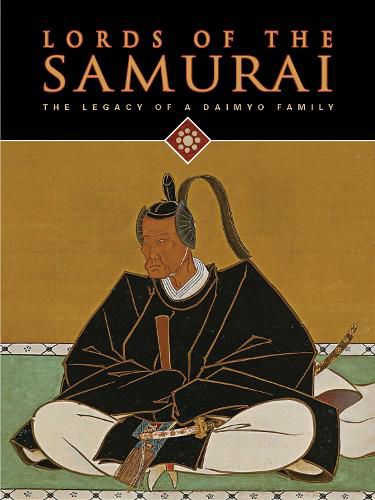Readings Newsletter
Become a Readings Member to make your shopping experience even easier.
Sign in or sign up for free!
You’re not far away from qualifying for FREE standard shipping within Australia
You’ve qualified for FREE standard shipping within Australia
The cart is loading…






Japan’s samurai were professional soldiers, but they could also be cultivated artists, writers and philosophers. Samurai means he who serves, and these fierce warriors acted in the service of powerful feudal lords known as daimyo ( great name ). Among the most important daimyo families were members of the Hosokawa clan, whose lineage dates back some six hundred years.
Lords of the Samurai brings to life the code of the samurai and the private and public lives of the daimyo by focusing on approximately 160 works from the Hosokawa family collection housed in the Eisei-Bunko Museum in Tokyo, the Kumamoto Castle and the Kumamoto Municipal Museum in Kyushu. Japanese historical objects discussed include suits of armor, armaments (including swords and guns), formal attire, calligraphy, paintings, tea ware, lacquer ware, masks, and musical instruments.
To the daimyo, martial arts were not just a physical or military activity-they were part of a spiritual and ethical program that governed every aspect of their existence. Featuring an extended essay by Thomas Cleary, Lords of the Samurai lays bare the principles that governed the spirit of the samurai, enabling it to endure for hundreds of years and continue to resonate today.
$9.00 standard shipping within Australia
FREE standard shipping within Australia for orders over $100.00
Express & International shipping calculated at checkout
Japan’s samurai were professional soldiers, but they could also be cultivated artists, writers and philosophers. Samurai means he who serves, and these fierce warriors acted in the service of powerful feudal lords known as daimyo ( great name ). Among the most important daimyo families were members of the Hosokawa clan, whose lineage dates back some six hundred years.
Lords of the Samurai brings to life the code of the samurai and the private and public lives of the daimyo by focusing on approximately 160 works from the Hosokawa family collection housed in the Eisei-Bunko Museum in Tokyo, the Kumamoto Castle and the Kumamoto Municipal Museum in Kyushu. Japanese historical objects discussed include suits of armor, armaments (including swords and guns), formal attire, calligraphy, paintings, tea ware, lacquer ware, masks, and musical instruments.
To the daimyo, martial arts were not just a physical or military activity-they were part of a spiritual and ethical program that governed every aspect of their existence. Featuring an extended essay by Thomas Cleary, Lords of the Samurai lays bare the principles that governed the spirit of the samurai, enabling it to endure for hundreds of years and continue to resonate today.